If you’re a fan of spicy food like me, you know that chili oil is a must-have in the kitchen. It’s the perfect liquid spicy condiment for spicy stir-fried chicken, dumplings with chili oil dipping sauce, and spicy beef noodle soup. However, there are times when you may run out of it or want to try something different. This is where chili oil substitutes come in handy, and I’ve compiled a list of the best options for you to get your hands on.
From some homemade sauces to spicy condiments, you’ll find the perfect substitute for chili oil to use! With so many to choose from, I’ll help you make the best pick possible based on your own preferences. But before we do that, let’s look into what this spicy liquid is.

🤷 What is Chili Oil?
Chili oil is a spicy condiment made by infusing chili peppers in oil, typically with additional ingredients like garlic and ginger for flavor. The intensity of chili oil can vary depending on the type and amount of peppers used. It adds heat and depth to dishes, ranging from stir-fries to noodles and even drizzled over pizza or soup.
🧑🍳 How to make Chili Oil
To make chili oil, heat oil (such as vegetable or peanut oil) in a saucepan until it reaches around 375°F (190°C). Then, add dried chili flakes, Sichuan peppercorns, and any desired aromatics like garlic and ginger, and let them infuse into the oil for a few minutes. Finally, strain the mixture into a heatproof container and let it cool before sealing and storing it for future use.

💡 Best Chili Oil Substitute
Homemade Chili Oil
Making homemade chili oil is a great way to add a personal touch to your cooking. Not only can you customize the level of heat and flavor to your liking, but you also have the satisfaction of knowing that you made it yourself. It’s a simple yet rewarding process that can elevate any dish.
Cayenne Pepper
1 teaspoon of chili oil = 1/4 teaspoon of chopped cayenne pepper
Cayenne peppers are a fiery alternative to chili oil known for their pungent and spicy flavor. They’re a great, convenient, easy-to-use, and flavorful pepper for all chili oil recipes. If it’s the oil consistency you need, you can infuse these peppers into other sauces, oils, or other swaps on the list to retain the fiery heat but different texture. You could also try using some cayenne pepper substitutes if you want that similar fiery heat but with added flavors and textures.
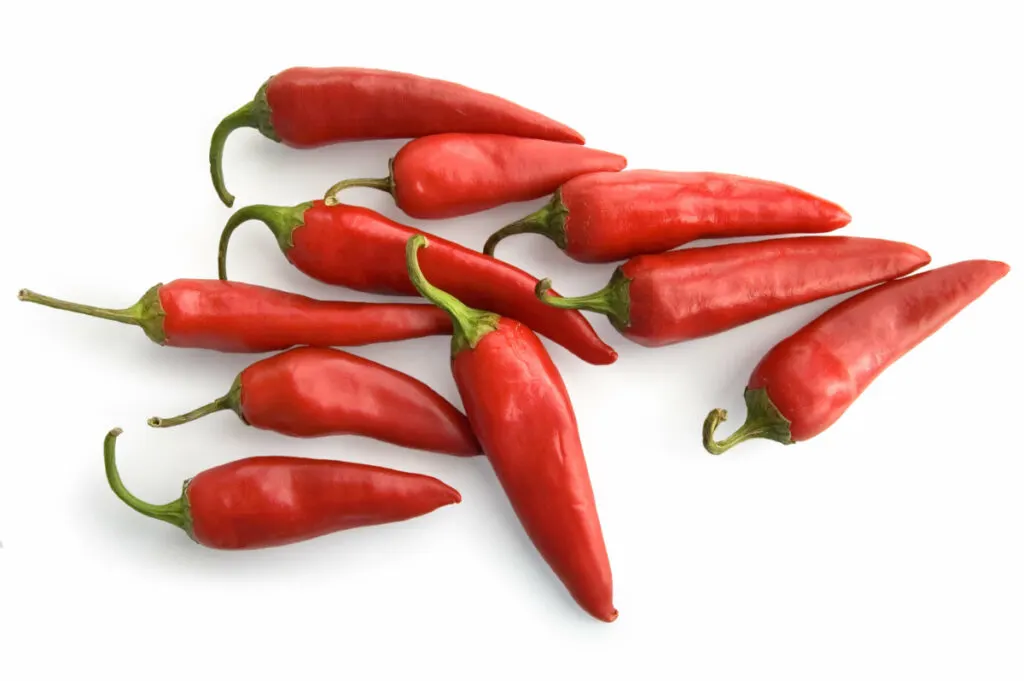
Sichuan Sauce
1 teaspoon of chili oil = 1 teaspoon of Sichuan sauce
This delicious little sauce is one of many tasty, spicy Chinese sauces. Sichuan or Szechuan sauce is a fantastic swap for chili oil that’s packed with a blend of spices, such as Sichuan peppercorns, garlic, and ginger. The blend of spicy, savory, and sometimes slightly sweet flavors paired with a low-calorie and low-fat content is perfect for those chili oil recipes.
Gochujang
1 teaspoon of chili oil = 1 teaspoon of gochujang
Coming from the Korean condiment aisle is the very delicious and super versatile Gochujang paste. This is one of the better swaps for chili oil, with equal heat but an even more delicious flavor. The blend of red chili pepper paste, fermented soybeans, and glutinous rice powder gives your recipes a perfect sweet and spicy taste with a low-calorie and nutrient-packed experience. If you can’t find this paste, you can use different gochujang substitutes instead.
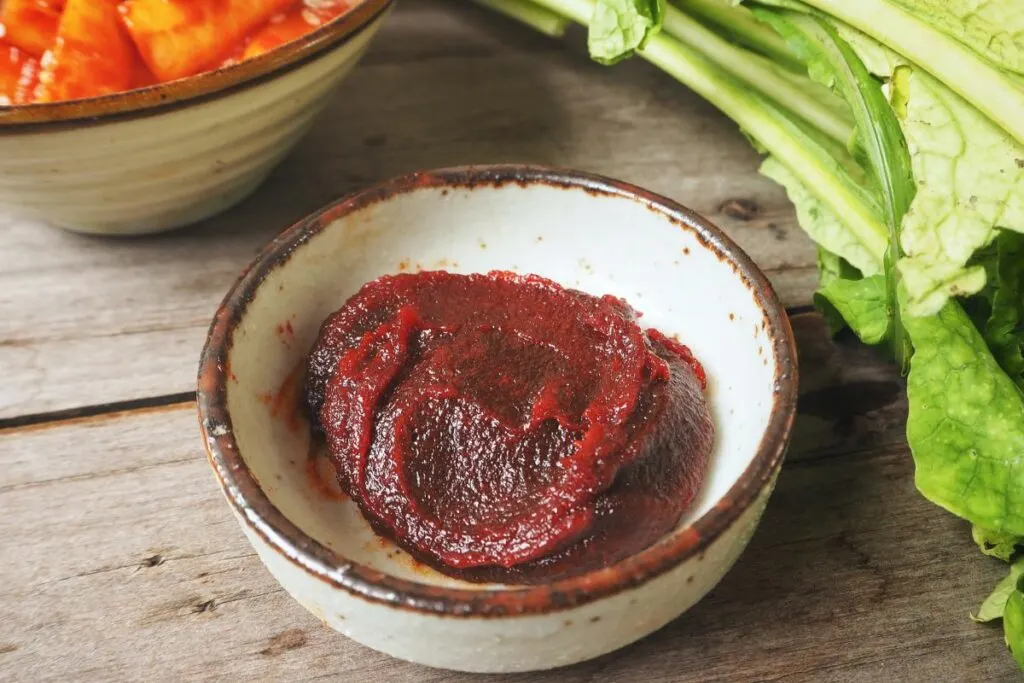
Spicy Soy Sauce
1 teaspoon of chili oil = 1 teaspoon of spicy soy sauce
Using a spicy soy sauce variant is a great choice for swapping out chili oil. It adds a balance of heat and savory, umami richness to tons of the same dishes. It’s even a health swap for it, with zero fat and low calories. It does have a lot of sodium, but you’ll only need a splash of it to give that similar spicy but delicious flavor profile. You can even use different light soy sauce swaps and dark soy sauce alternatives, but they’ll lack the spicy heat you’re looking for.
Black Bean Sauce
1 teaspoon of chili oil = 1 teaspoon of black bean sauce
The delicious and savory flavor derived from the fermented black beans is why this Black bean sauce is up here. It’s the perfect versatile accompaniment to your food. The savory, slightly salty taste paired with a tasty umami richness can be great in many recipes that use chili oil. It’s even a nutritious sauce with various benefits like protein, fiber, iron, and antioxidants. You’ll lack the spicy flavor, but you can add various spices and ingredients to remedy this.
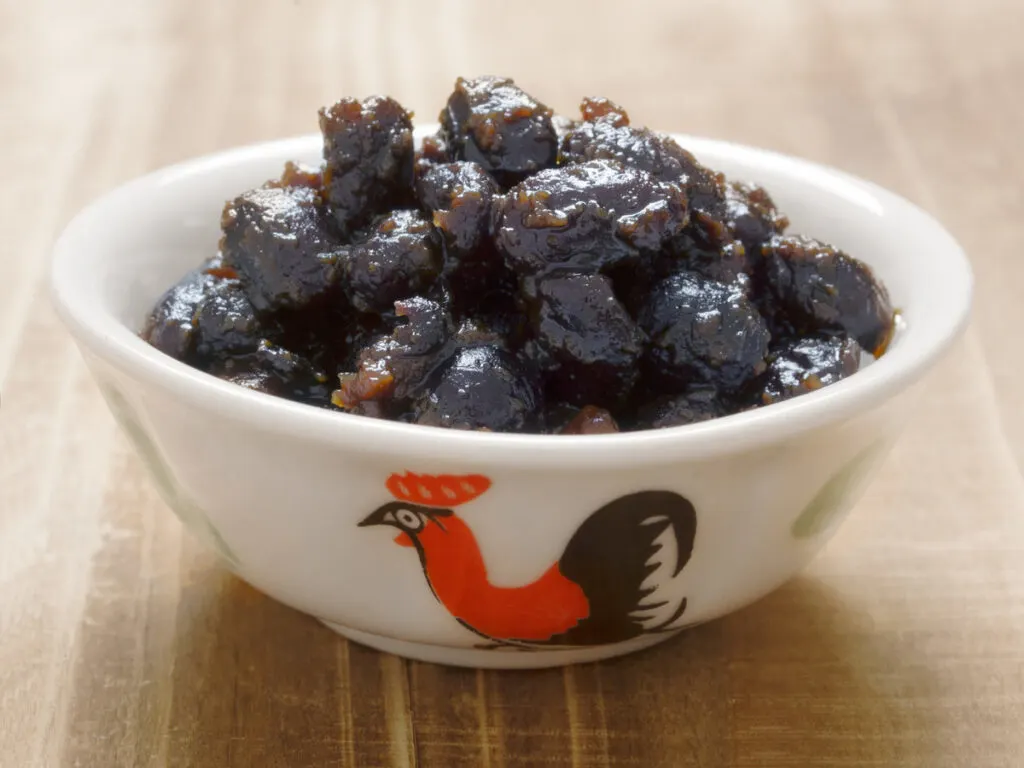
Sriracha
1 teaspoon of chili oil = 1/4 to 3/4 teaspoon of sriracha
Sriracha is a fantastic spicy sauce that’s part of many delicious Asian sauces. The blend of chili peppers, vinegar, garlic, sugar, and salt give it a delicious sweet, sour, and spicy flavor. You can mix this sauce in with many chili oil recipes as the flavors and spice will meld nicely. You can even customize the sauce to your liking or use different sriracha substitutes for a more personalized taste. With the different brands of sriracha, you won’t have a problem finding the perfect one.
Dried Peppers
1 teaspoon of chili oil = 1/2 teaspoon of chopped dried peppers
Dried peppers are perfect concentrated splash of spice for any chili oil recipe. What makes these a great alternative to chili oil is that they can be used in many ways, such as rehydrating them, grinding them into powders, or using them whole. You can even infuse oil with these peppers to create your own chili oil at home. The type of dried pepper you use really comes down to your palate and how spicy you want it. But you can try using some chipotle pepper swaps for a broader range of flavor.

Chili Flakes
1 teaspoon of chili oil = 1 teaspoon of chili flakes
Looking for a simple yet spicy swap for chili oil? Chili flakes are just what you need. This spicy ingredient is made by crushing dried chili peppers into small flakes. The flavor will depend on the type of chili pepper used, so you could have anything from smoky to sweet. These flakes are east to use, highly available, and equally spicy and flavorful as chili oil. If you can’t find any though, you can try using some chili flake substitutes.
Sweet Chili Sauce
1 teaspoon of chili oil = 1 teaspoon of sweet chili sauce
If you want a delicious sweet flavor swap but still pack the spicy heat, then this sweet chili sauce is perfect for you. The combination of chili peppers, vinegar, sugar, and garlic gives it everything it needs. Even the added tanginess on top of the sweet spicy flavor is a fantastic bonus to any chili oil dish. If you can’t find any of this sauce but are dying for a similar flavor, you can use some sweet chili sauce alternatives in its place.
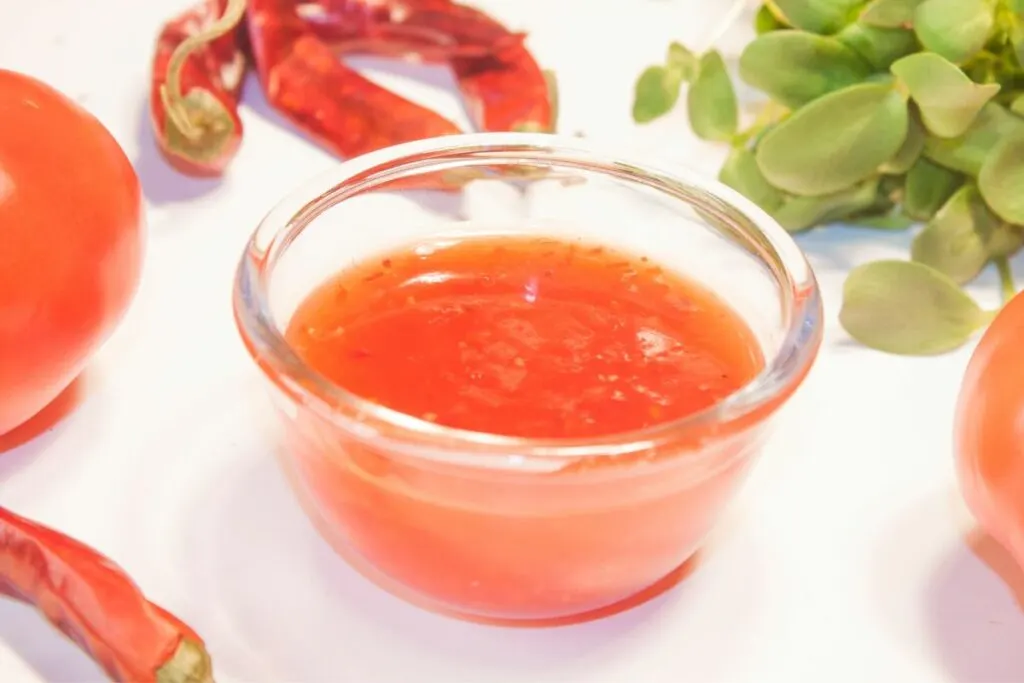
Heat Chilies in Oil
1 teaspoon of chili oil = 1 teaspoon of heat chilies in oil
Heating chilies in oil is a quick fix for running out of chili oil. It infuses the oil with spicy heat from dried or fresh chili peppers, creating that delicious fiery taste you’re looking for. You can even add in different ingredients, chili types, and spices for a bonus personalized taste. It’s quite similar to homemade chili oil but differs in that it’s just directly heating a pot of chili and oil instead of using a longer infusion process.
Chili Garlic Oil
1 teaspoon of chili oil = 1 teaspoon of chili garlic oil
Chili garlic oil is the perfect pungent and spicy substitute for chili oil. It’s everything chili oil has, plus garlic. It has exactly the same spicy and aromatic taste but with a nice kick from the bonus-added garlic. Just like chili oil, you can use the same process to make it at home, but just throw in some garlic.
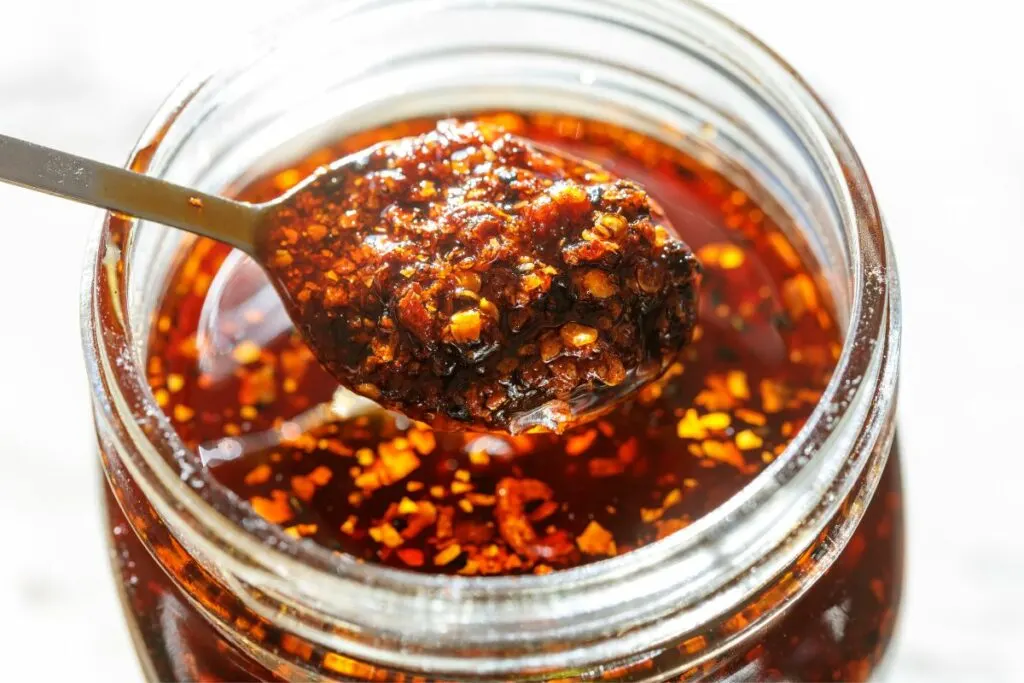
Bird’s Eye Chili Oil
1 teaspoon of chili oil = 1 teaspoon of Bird’s Eye chili oil
This chili oil infusion uses delicious and spicy bird’s eye chili peppers. The tasty fruity flavor and fiery kick you get with this sauce is a perfect variation to chili oil. You can use it in exactly the same ways and even customize and create your own at home. If you can’t find or don’t have these peppers, you can use different bird’s eye chili pepper substitutes instead.
Sambal Oelek
1 teaspoon of chili oil = 1 teaspoon of sambal oil
A sauce with heat, flavor, and versatility all in one. Sambal oelek can be the best alternative to use, given the flavors it has. It’s made by grinding fresh chili peppers, vinegar, and salt into a paste that’s just delicious. It’s another tasty Asian sauce that has near-perfect use cases in many chili oil recipes. Any sambal oelek alternative can be used if you have trouble finding this sauce.
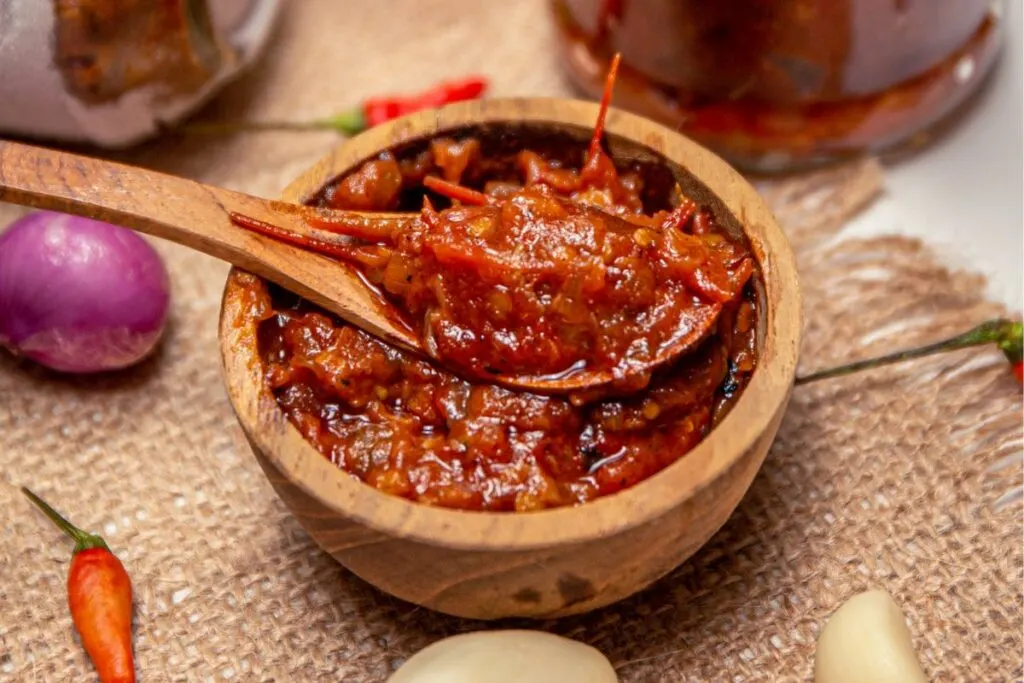
Chiu Chow Chili Oil
1 teaspoon of chili oil = 1 teaspoon of Chiu chow chili oil
The Chinese variation on chili oil is quite a tasty alternative. It’s a spicy, tangy, yet fragrant oil made by infusing oil with dried chili peppers, garlic, and other seasonings. The heat and flavor are comparable to chili oil, so you won’t find any problems when swapping it out. The chiu chow chili oil is a quick pick-up in any Chinese food aisle or supermarket, so don’t sleep on this one.
Salsa Macha
1 teaspoon of chili oil = 1 teaspoon of salsa macha
Salsa Macha is a truly delicious and unique swap, thanks to its smokiness, nuttiness, and spiciness. It uses roasted nuts, garlic, and sometimes even dried fruits for that iconic flavor. Its thicker texture allows it to cling to food more effectively. The heat plus the added bonus of delicious nutty and smoky flavors makes for a scrumptious swap for chili oil.
🧐 FAQs
You can buy chili oil in most Asian grocery stores or online marketplaces. Some popular brands of chili oil include Lee Kum Kee, Lao Gan Ma, and Huy Fong Foods.
You can make a chili-infused olive oil by heating olive oil with dried chili flakes or fresh chili peppers. This can be used as a substitute for chili oil in recipes that do not require the same level of heat.
